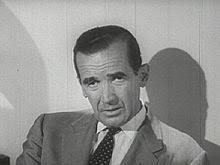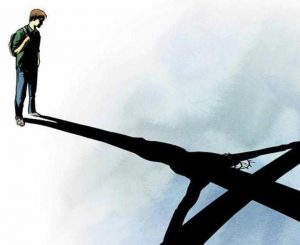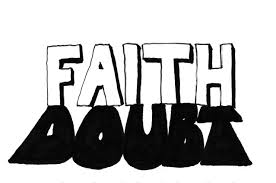 Edward R. Murrow, the legendary journalist who rose to fame during World War II, is credited for saying, “Anyone who isn’t confused doesn’t really understand the situation.” He also called his era of humanity “an age of confusion.”
Edward R. Murrow, the legendary journalist who rose to fame during World War II, is credited for saying, “Anyone who isn’t confused doesn’t really understand the situation.” He also called his era of humanity “an age of confusion.”
“Opinions can be picked up cheap in the market place while such commodities as courage and fortitude and faith are in alarmingly short supply,” he said.
 This can actually be said of any human era—especially those covered in the scriptures. The mass readings for the Second Sunday of Easter certainly cover a confusing time for anyone who knew or even heard of Jesus. The gospel reading from John (Jn 20:19-31) recounts the period right after Jesus was crucified. His disciples hid from their Master’s persecutors in a secluded but locked room. What was to become of them? What would become of humanity? Jesus cleared up their confusion by appearing to them and conferring on them the core of our faith:
This can actually be said of any human era—especially those covered in the scriptures. The mass readings for the Second Sunday of Easter certainly cover a confusing time for anyone who knew or even heard of Jesus. The gospel reading from John (Jn 20:19-31) recounts the period right after Jesus was crucified. His disciples hid from their Master’s persecutors in a secluded but locked room. What was to become of them? What would become of humanity? Jesus cleared up their confusion by appearing to them and conferring on them the core of our faith:
“As the Father has sent me, so I send you. “ And when he had said this, he breathed on them and said to them, “Receive the Holy Spirit. Whose sins you forgive are forgiven them, and whose sins you retain are retained.”
Disciple Thomas was absent that day, so he didn’t get the directive. That’s why, when his colleagues told him they saw their crucified Master alive and well, he was incredulous.
“Unless I see the mark of the nails in his hands and put my finger into the nailmarks and put my hand into his side, I will not believe,” he said.
We in the current age of confusion can relate to his lack of faith and his subsequent confusion when Jesus paid him a personal visit.
“Put your finger here and see my hands, and bring your hand and put it into my side, and do not be unbelieving, but believe,” Jesus told him.
 Reading that passage in this age of confusion, we realize we can all be Doubting Thomases. “I want to put my hand in Jesus’s side too,” we might say. We lack the courage, fortitude and faith of the people described in our first reading (Acts 5:12-16), who were content just to get near to the people who were once near to Jesus.
Reading that passage in this age of confusion, we realize we can all be Doubting Thomases. “I want to put my hand in Jesus’s side too,” we might say. We lack the courage, fortitude and faith of the people described in our first reading (Acts 5:12-16), who were content just to get near to the people who were once near to Jesus.
… “they even carried the sick out into the streets and laid them on cots and mats so that when Peter came by, at least his shadow might fall on one or another of them.”
Then there was John. For his faith, he was exiled to a deserted island. Talk about a reason for confusion! Spending all that time in solitude could make it hard for anybody to distinguish between reality and hallucinations. But John was the one who stood at Jesus’s feet as his Master was dying on the cross, and the one Jesus told his mother Mary to consider as her own son. In this passage from Revelation (Rev 1:9-11a, 12-13, 17-19)—our second reading this Sunday—John’s faith tells him his visions are inspired by The Spirit, not a confused mind.
I was caught up in spirit on the Lord’s day and heard behind me a voice as loud as a trumpet, which said, “Write on a scroll what you see.” Then I turned to see whose voice it was that spoke to me, and when I turned, I saw seven gold lampstands and in the midst of the lampstands one like a son of man, wearing an ankle-length robe, with a gold sash around his chest.
That vision of John’s Master must be ours. He’s calling us to be … his shadow…the wound in his side…the empty tomb…for all those who are confused about whether or not faith is for fools. By living the gospel, we take each other beyond the shadow of doubt and become the shadow of the risen Christ.
–Tom Andel